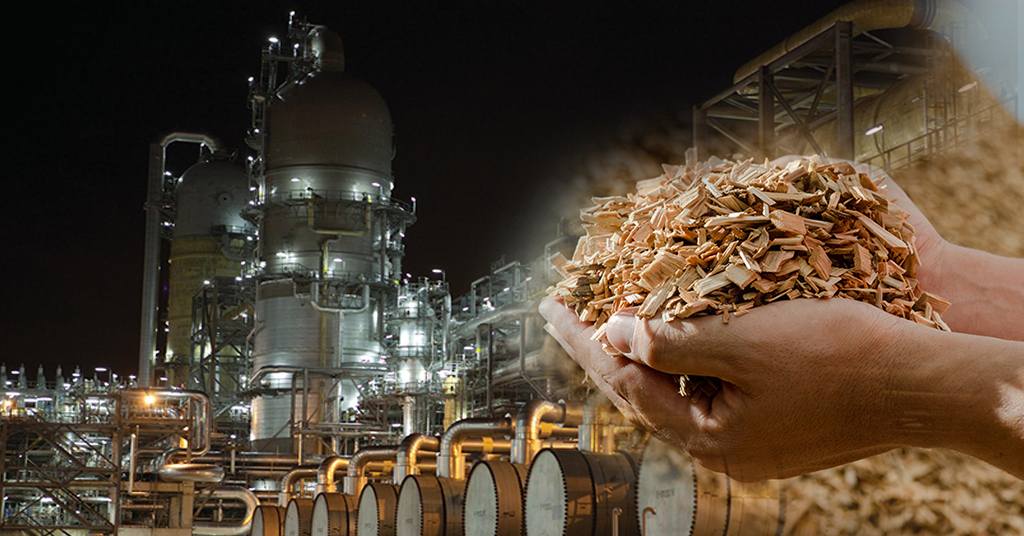Norway's Gas Production Surges Amidst Decarbonisation Drive with CCS and Offshore Wind
- 05-Jul-2023 5:18 PM
- Journalist: Nicholas Seifield
Norway: As Europe faces ongoing energy security concerns, Norway has solidified its position as a Natural gas exporter by maintaining high levels of gas production and greenlighting numerous new oil and gas projects to boost its Hydrocarbon reserves. At the same time, Norway is committed to transitioning to low-carbon and green energy sources, including carbon capture and storage (CCS) technologies and offshore wind power, to reduce its carbon footprint.
Norway's status as Europe's primary Natural gas exporter was cemented after the Ukraine crisis drove the EU to decrease its reliance on Russian gas imports. In the first five months of 2023, Norway's gas production reached 50.5 billion standard cubic metres (Sm3). With Norway's continued investment in both traditional and green energy sources, it appears poised to maintain its significant role in Europe's energy landscape for years to come.
In addition to its strong Natural gas production, Norway has increased its oil output, with 43 million Sm3 (270 million barrels) produced from its offshore fields in the first five months of 2023. This represents a slight uptick from 2022 figures, largely due to the North Sea's Johan Sverdrup phase 2 coming online towards the end of last year and additional fields beginning production in the first half of 2023.
As a reliable and steady supplier of energy to Europe, particularly in terms of Natural gas, Norway has further solidified its position. While maintenance work in May led to some reduction in production levels, overall gas production for the first four months of the year remained on par with 2022 figures, which saw Norway deliver record amounts of gas to Europe. With its continued investment in energy development, Norway is poised to maintain its status as a trusted and long-term supplier of energy to the continent.
With a focus on increasing its exploration activities, Norway has seen success in its efforts, with numerous hydrocarbon discoveries being made. This year, the country has already drilled 18 exploration wells, with 12 of those being wildcat wells and seven resulting in successful discoveries.
Norway anticipates that this level of high exploration activity will continue through the autumn months, with nearly 40 wildcat and appraisal wells expected to be completed in total this year. As a result, exploration levels remain at a steady high, with new discoveries totalling between 9 and 32 million Sm3 oil equivalent (oe). With Norway's continued commitment to exploration and innovation, it appears likely that the country will continue to make significant strides in the energy sector in the years to come.
To expand exploration activity on the Norwegian continental shelf (NCS), the Norwegian Ministry of Petroleum and Energy granted production licenses to 25 companies as part of the award in pre-defined areas 2022 (APA 2022). Out of the 47 production licenses, 29 are in the North Sea, 16 in the Norwegian Sea, and 2 in the Barents Sea.
While many wells are being drilled near existing infrastructure, offering an opportunity for additional resources for current fields, it is also crucial for companies to drill in less-explored regions. With these new production licenses, companies can continue searching for valuable hydrocarbon resources while following stringent regulations and guidelines set forth by the Norwegian government.
This continued exploration and innovation will keep Norway at the forefront of the energy sector, making significant strides in the field for years to come.
In addition to the 24 new projects that have been approved, Norway has granted production licenses for 20 additional acres for existing licenses, along with new areas added in this year's APA taking applications until late August. Fields such as Baugh, Fenja, and Hyme, tied back to the Njord A platform, have already started production.
The Norwegian government has given the green light to 19 oil and gas projects with total investments exceeding NOK 200 billion (around $18.8 billion). These projects include new developments, the expansion of existing fields, and investments to enhance recovery from existing fields. By investing in these projects, Norway is continuing to push the boundaries in the energy sector, creating opportunities for growth and innovation.
Despite a projected natural decline in oil and gas production on the Norwegian shelf after 2025, approved projects are expected to sustain output levels. In addition, these projects provide a solid foundation for high activity in the Norwegian supplier industry and reinforce Norway's position as a stable supplier of oil and gas for years to come.
Simultaneously, Norway is taking multiple steps towards decarbonization of its oil and gas industry, striving to reach its net-zero targets. To reduce emissions, the country is implementing energy transition measures, including the electrification of oil and gas assets, offshore wind, carbon capture and storage, and Hydrogen. These initiatives reflect Norway's commitment to being a leader in sustainable energy practices and addressing climate change concerns.
Norwegian authorities have announced two areas for offshore wind surveys this year, while also awarding two exploitation licenses for CO2 storage. Carbon capture and storage is an essential climate measure that presents exciting opportunities for value creation. The Norwegian Petroleum Directorate (NPD) has unique subsurface expertise and knowledge of the shelf, which it leverages to identify suitable CO2 storage locations.
In line with its net-zero targets, Norway is taking significant steps to expand its knowledge of offshore wind. The NPD is leading pilot surveys for offshore wind in Sørlige Nordsjø ll and Utsira Nord, demonstrating a commitment to sustainable energy practices and addressing climate change concerns. These efforts reflect Norway's dedication to becoming a leader in climate-conscious initiatives and forging new paths towards a greener future.
In mid-April, data acquisition work for offshore wind turbines began in Sørlige Nordsjø ll, and the processing work is fully underway. The acquisition work was initiated in early June in Utsira Nord. The goal of this project is to gather critical data that will inform the future placement of offshore wind turbines, which is expected to be highly beneficial.



